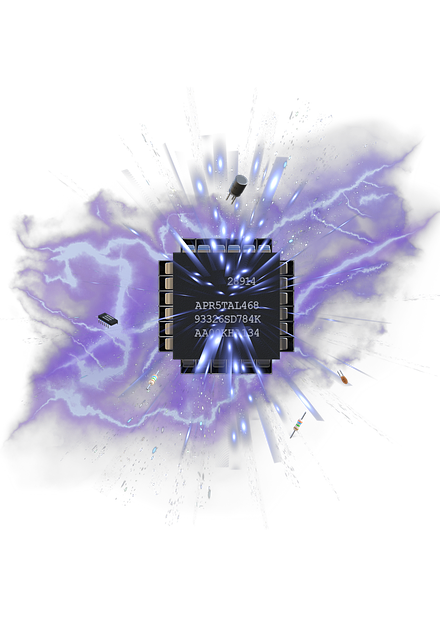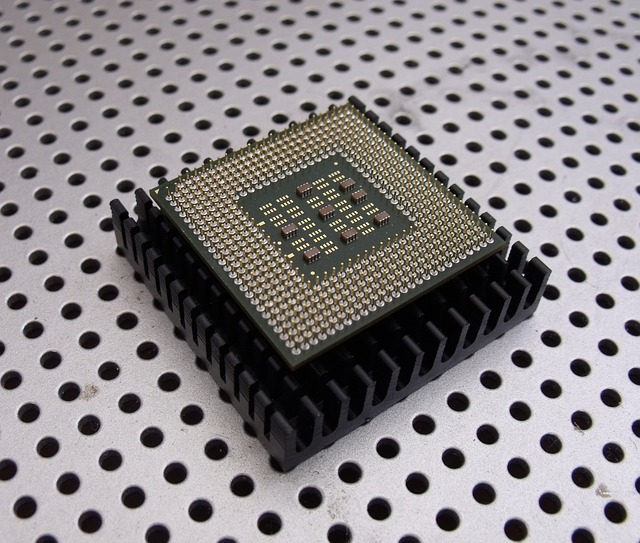Meta Description
Discover the power of microchip technology in industries. Explore these tiny circuits’ benefits, challenges, and future possibilities in healthcare, manufacturing, automotive, and more.
Introduction
Microchips are tiny electronic circuits at the heart of many devices and systems we use daily, from phones and laptops to cars and aeroplanes. These powerful chips can process vast amounts of information quickly and efficiently, making them invaluable in various industries.
Microchip technology has come a long way since its inception, and it is now a critical component in many of the devices we rely on in our daily lives. Microchips are tiny integrated circuits containing many electronic components packed into a small space, including transistors, diodes, and capacitors. These components are interconnected by a network of wires, forming a complex system that can perform various tasks.
One of the critical advantages of microchips is their speed and efficiency. These tiny circuits can process vast amounts of information at lightning-fast speeds, making them ideal for use in industries that require high-performance computing. This article will explore microchips, how they work, and how they can be used in industries.

Overview of Microchips
A microchip, an integrated circuit or IC, is a tiny electronic component made of semiconductor materials, typically silicon. Microchips are the building blocks of modern electronics and are found in many devices, including computers, smartphones, televisions, cars, medical devices, and many more.
Microchips are tiny chips also incredibly versatile and can be customized to perform specific tasks, making them an essential tool for researchers and engineers in various fields. The size of chips connected components is typically measured in micrometres, allowing tiny and robust devices to be created.
Microchips can be classified into several categories based on their complexity and functionality. Some of the most common types include:
Microprocessors are the brains of most electronic devices and are responsible for processing and executing instructions. Memory chips store data and program instructions for the device’s proper functioning. Digital signal processors (DSPs) are specialized microchips that handle digital signals, such as audio or video. Application-specific integrated circuits (ASICs) are custom-designed microchips optimized for specific applications, such as encryption or data compression.
Microchips in Manufacturing
Microchips play a vital role in modern manufacturing processes. They are tiny electronic components containing integrated circuits (ICs) used in various devices, from smartphones and computers to automobiles and industrial machinery.
In manufacturing, microchips are used in a variety of ways, including:
Control and automation:
Microchips are used to control and automate manufacturing processes, making them more efficient and reducing the need for human intervention.
Quality control:
Microchips can be used to monitor and control the quality of manufacturing processes, helping to ensure that products meet specific standards.
Inventory management:
Microchips can track inventory levels and automate the ordering process, reducing waste and improving efficiency.
Data collection and analysis:
Microchips can be used to collect and analyze manufacturing process data, helping identify improvement areas and optimize operations.
Product design and development:
Microchips are essential in designing and developing new products, allowing device manufacturers to create more sophisticated and advanced products.
Microchips in Automation
Microchips play a crucial role in automation processes. They are used to control and regulate the operations of various machines and equipment, making them more efficient and reliable. Some ways in which microchips are used in automation include:
Control systems:
Microchips control the movements and operations of machines and equipment in automated systems. They can detect and respond to environmental changes, adjust settings and parameters, and optimize performance.
Sensors and actuators:
Microchips are used to power sensors and actuators, which are used to detect and respond to changes in the environment. For example, sensors can detect temperature, pressure, or motion, and actuators can react by adjusting the position of a machine or other device or changing the flow of materials.
Robotics:
Microchips are a critical component in developing robots and other automated systems. They control the movement and actions of the robot, allowing it to perform complex tasks and interact with the environment.
Internet of Things (IoT):
Microchips are used in IoT devices, which are interconnected devices that can exchange data with each other. IoT devices can monitor and control various systems, from home appliances to industrial equipment.

Microchips in Engineering
Microchips play a vital role in engineering, enabling the development of sophisticated and complex systems. They are used in various engineering applications, including:
Electronics:
Microchips are the foundation of modern electronics, from consumer electronics like smartphones and computers to industrial applications like control systems and robotics. They control and regulate the flow of electricity, process data, and various power devices.
Aerospace:
Microchips are used in aerospace engineering to control and monitor various systems, including flight, communication, and navigation systems. They are designed to operate under challenging environments and withstand extreme temperatures and pressures.
Automotive:
Microchips are used in automotive engineering to power various systems, including engine management systems, anti-lock braking systems, and advanced driver assistance systems (ADAS). They are used to process sensor data and provide real-time feedback to the driver.
Manufacturing:
Microchips are used in manufacturing engineering to control and optimize various processes, including quality control, inventory management, and automation. They are used to monitor and regulate equipment, collect data, and improve overall efficiency.
How Microchips Enhance Data Security and Privacy Protection
Microchips can enhance data security and privacy protection in several ways:
Encryption:
Microchips can be used to encrypt data, making it impossible for unauthorized parties to understand. Encryption will ensure that data is protected while in transit or at rest and can be used to safeguard sensitive information such as financial data, personal health information, and trade secrets.
Authentication:
Microchips can be used to provide secure authentication mechanisms, ensuring that only authorized individuals can access sensitive data centers or systems. This can be done using biometric sensors or other security features like passwords or PINs.
Tamper resistance:
Microchips can be designed to be tamper-resistant, making it impossible for attackers to gain access to the data stored on them. Physical security features, such as hardened coatings or specialized packaging material, can do this.
Secure boot:
Microchips can be programmed to perform a secure boot process, ensuring the system only loads digitally signed and authenticated software. This helps prevent malware and other unauthorized code from running on the system.
Secure communication:
Microchips can be used to ensure secure communication between devices or systems. This can be done through encryption or other secure communication protocols, ensuring that data is protected in transit.
Microchips improvements and Computing power
Microchips have come a long way since their inception, significantly improving their computing power and efficiency. The number of transistors in a microchip has been increasing exponentially, which has led to an increase in computing power while reducing the size and energy consumption of the computer chip.
In the 1970s, a microchip contained only a few hundred transistors, while today’s can contain billions. This increase in transistor density has led to a significant improvement in computing power, enabling the development of powerful computers, smartphones, and other computing devices.
The miniaturization of microchips has also enabled the development of small and portable devices with high computing power, such as wearables and smartwatches. These devices have microchips that can perform complex tasks such as voice recognition, image processing, and motion tracking.
Moreover, microchips have also become more energy-efficient, enabling the development of devices that can run for extended periods on a single battery charge. These improvements have significantly impacted various fields, including medicine, aerospace, and automotive, enabling the development of more efficient and reliable systems.
The Different Types of Microchips Available on the Market Today
Several different types of microchips are available today, each with specific applications and features.
Microprocessors:
Microprocessors are used in general-purpose computing applications, such as personal computers, servers, and embedded systems. They typically contain a central processing unit (CPU), memory, and input/output interfaces.
Microcontrollers:
Microcontrollers are used in embedded systems and control applications, such as appliances, automotive systems, and industrial equipment. They typically contain a CPU, memory, input/output interfaces, and on-chip peripherals, such as analogue-to-digital converters (ADCs) and timers.
Field-Programmable Gate Arrays (FPGAs):
FPGAs are used in digital signal processing (DSP) and high-performance computing applications, such as video processing and cryptography. They are programmable devices that can be configured to perform specific functions, such as logic gates, arithmetic functions, and memory.
Digital Signal Processors (DSPs):
DSPs are specialized microchips in audio, video, and signal processing applications. They are optimized for mathematical operations, such as Fourier transforms and filtering.
Graphics Processing Units (GPUs):
GPUs are specialized microchips used in graphics and video processing applications. They are optimized for parallel operations, such as matrix and image processing.
System-on-Chip (SoC):
SoCs are microchips that integrate multiple components, such as microprocessors, memory, input/output interfaces, and on-chip peripherals, onto a single chip. They are used in various applications, including mobile devices, automotive systems, and intelligent home appliances.
Challenges and Risks Associated with Using Microchips in Industries
While microchips offer a wide range of benefits for industries, several challenges, and risks are associated with their use.
Security Risks:
As microchips are used to store and process sensitive data, they are often targeted by hackers and cybercriminals. This can lead to data breaches, theft of intellectual property, and other security threats.
Reliability Issues:
Microchips can experience reliability issues due to temperature, humidity, radiation, and voltage fluctuations. These issues can result in system failures, downtime, and loss of productivity.
Compatibility Issues:
Microchips can also experience compatibility issues with other components in a system, such as sensors and actuators. This can lead to system malfunctions, data errors, and other problems.
Cost:
The cost of microchips can be a barrier to adoption for some industries, particularly those with tight budget constraints. This can limit the ability of organizations to take advantage of the many business benefits offered by microchip technology.
Ethical Considerations:
The use of microchips in industries can raise ethical concerns, particularly concerning data privacy and surveillance. Organizations must use microchips responsibly and transparently and respect individuals’ privacy and rights.
The Future of Microchip Technology in Various Fields
The chip industry heavily relies on producing a high-quality silicon wafer as a substrate for fabricating microchips. However, the future of microchip technology is fascinating, with numerous advances and innovations on the horizon. Here are some potential applications of microchips in various fields:
Healthcare:
Microchips are likely to play a significant role in healthcare, with applications such as smart pills that can monitor vital signs and drug delivery and implantable devices that can monitor and treat chronic conditions.
Automotive Industry:
Microchips are already used extensively in the automotive industry, and their use is expected to increase. Future applications include self-driving cars, vehicle-to-vehicle communication, and advanced driver-assistance systems.
Agriculture:
Microchips can be used in precision agriculture to monitor nutrients in the soil, moisture levels, and other factors that affect crop growth. This can help farmers optimize their operations and increase yields.
Manufacturing:
Microchips can be used in manufacturing to monitor production processes and identify areas for improvement. They can also be used to optimize supply chain logistics, reducing waste and increasing efficiency.
Robotics:
Microchips are already widely used in robotics, and their use is expected to increase. Future applications may include advanced autonomous robots for manufacturing, healthcare, and other industries.

Conclusion
In conclusion, microchip technology is a game-changer in many industries, and its use is only expected to grow. Whether in healthcare, manufacturing, or automotive, microchips are revolutionizing how we work, live, and interact with the world around us. As the technology continues to evolve, it will be essential for industries to consider the benefits and challenges associated with microchip technology and ensure its responsible and ethical use.

